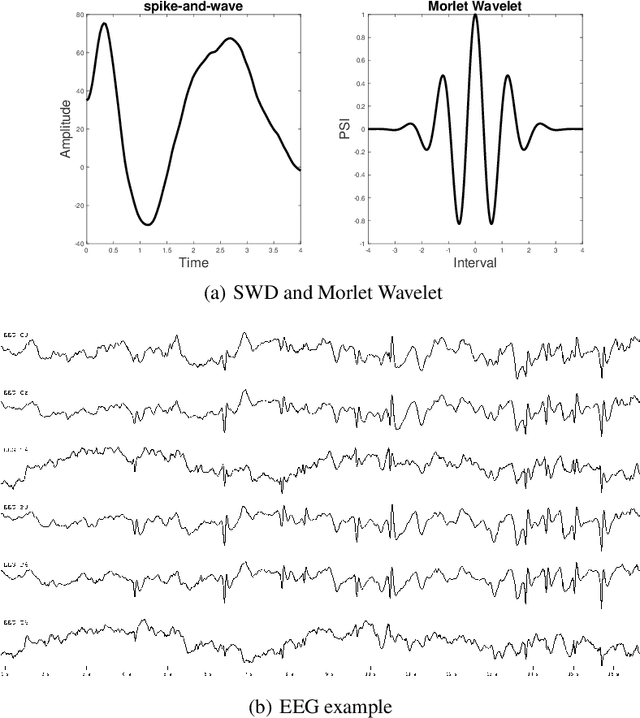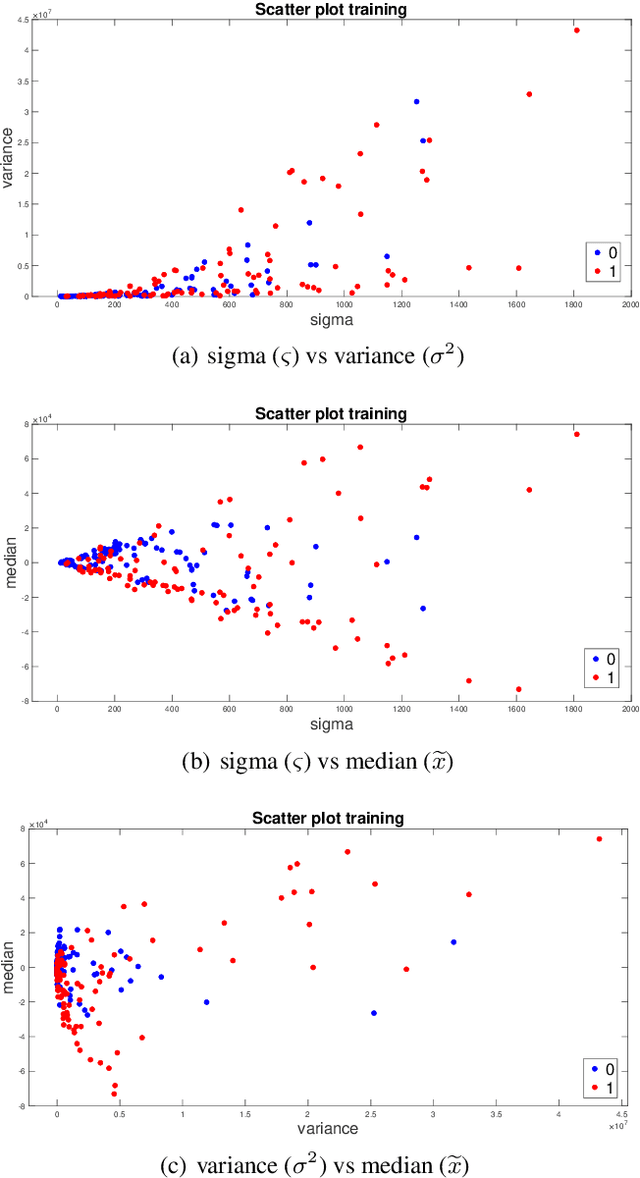A novel spike-and-wave automatic detection in EEG signals
Paper and Code
Dec 15, 2019


Spike-and-wave discharge (SWD) pattern classification in electroencephalography (EEG) signals is a key problem in signal processing. It is particularly important to develop a SWD automatic detection method in long-term EEG recordings since the task of marking the patters manually is time consuming, difficult and error-prone. This paper presents a new detection method with a low computational complexity that can be easily trained if standard medical protocols are respected. The detection procedure is as follows: First, each EEG signal is divided into several time segments and for each time segment, the Morlet 1-D decomposition is applied. Then three parameters are extracted from the wavelet coefficients of each segment: scale (using a generalized Gaussian statistical model), variance and median. This is followed by a k-nearest neighbors (k-NN) classifier to detect the spike-and-wave pattern in each EEG channel from these three parameters. A total of 106 spike-and-wave and 106 non-spike-and-wave were used for training, while 69 new annotated EEG segments from six subjects were used for classification. In these circumstances, the proposed methodology achieved 100% accuracy. These results generate new research opportunities for the underlying causes of the so-called absence epilepsy in long-term EEG recordings.
 Add to Chrome
Add to Chrome Add to Firefox
Add to Firefox Add to Edge
Add to Edge